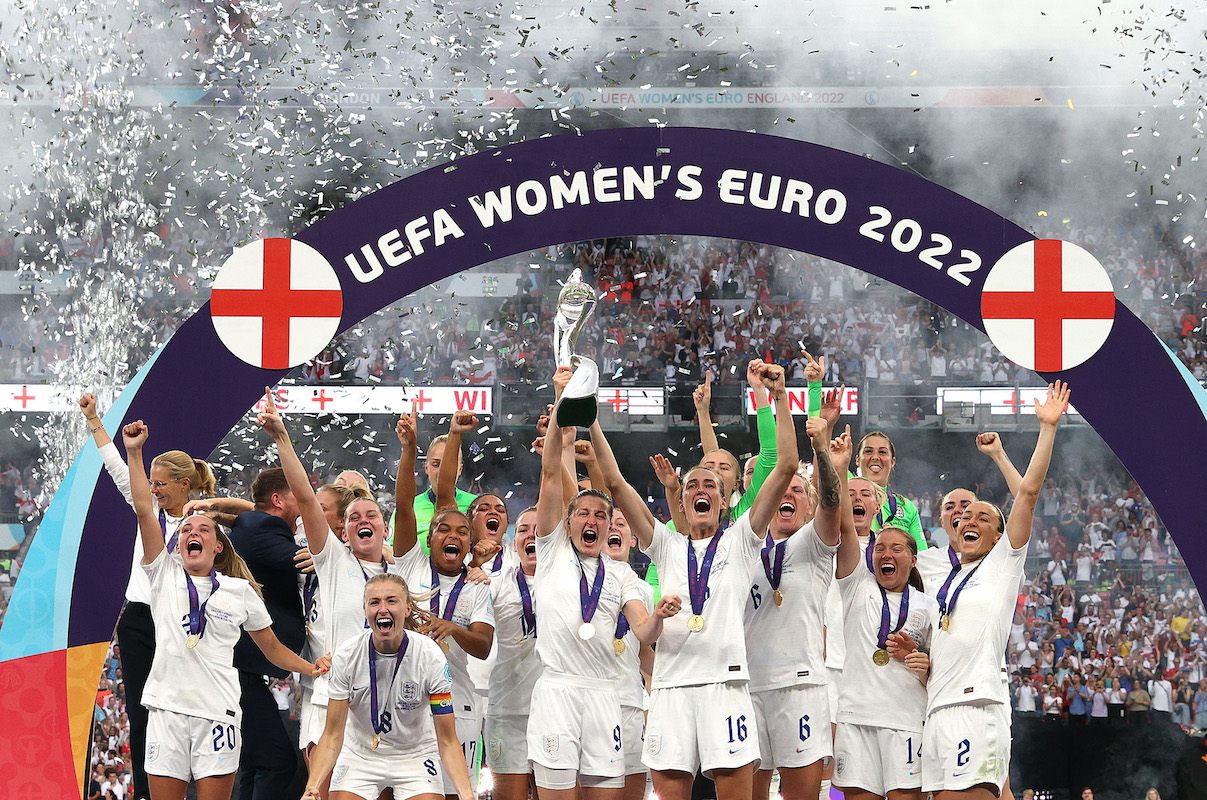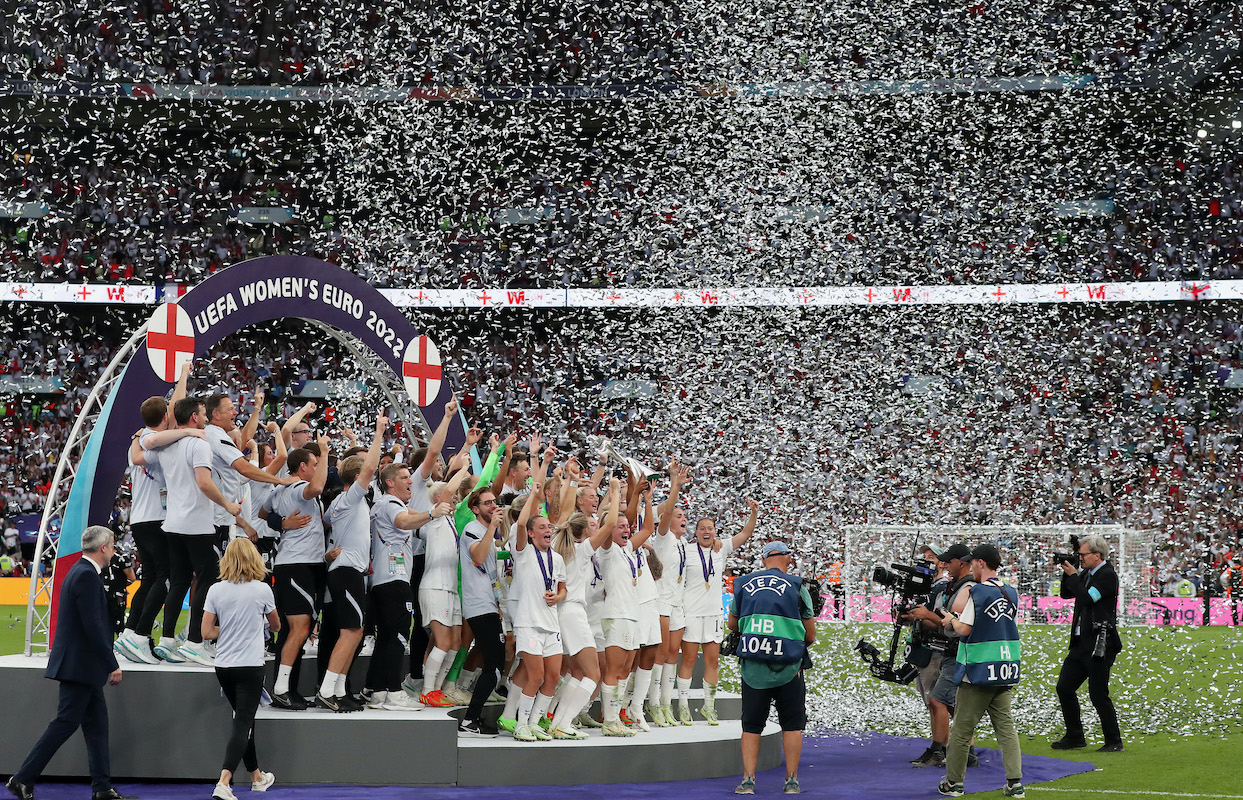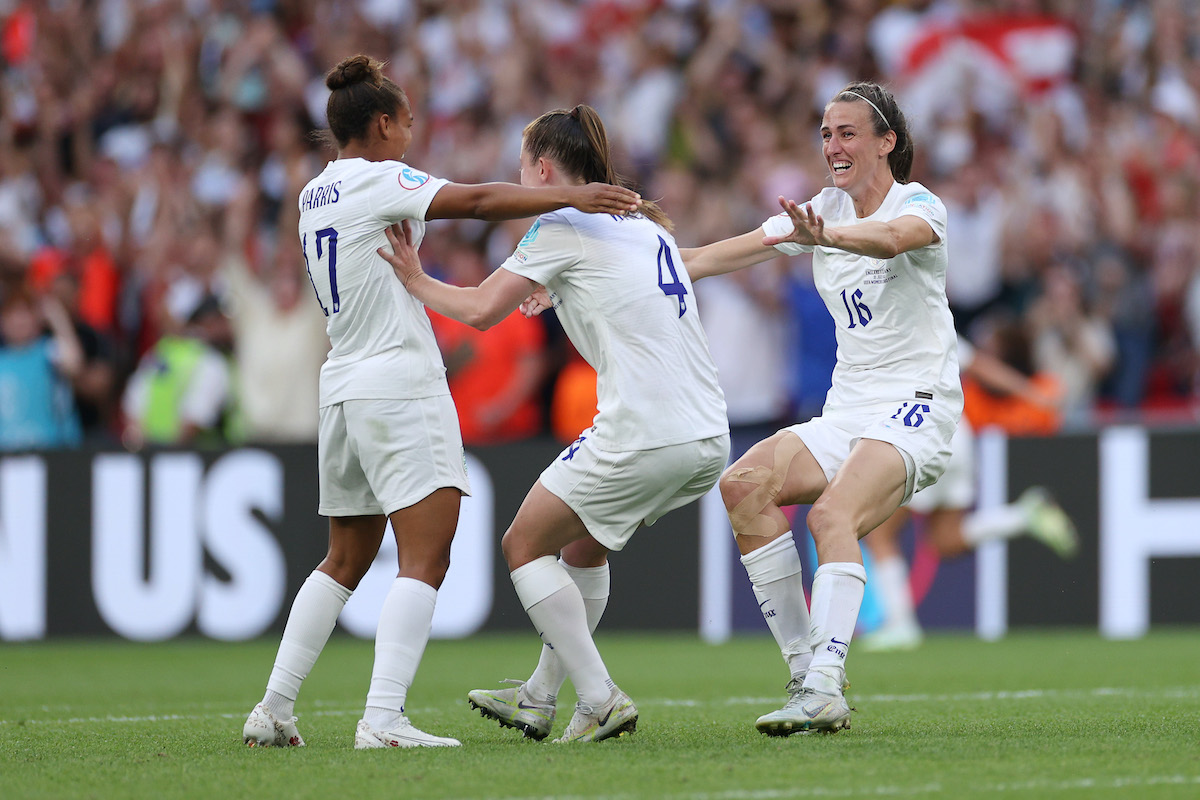This website uses cookies so that we can provide you with the best user experience possible. Cookie information is stored in your browser and performs functions such as recognising you when you return to our website and helping our team to understand which sections of the website you find most interesting and useful.
The beautiful game: a look back at England’s triumph at UEFA Women’s Euro 2022
By Rikesh Chauhan | 31 August 2022 | Sport
One month on from the landmark victory at Wembley, we break down how the Lionesses made history as the first England team to become champions of Europe

Football has never just been a man’s game. In the early 1900s, it was the women’s game that started drawing record crowds during and after the First World War, with winger Lily Parr becoming a bona fide superstar. The fact that, among many things, the FA and political bodies weren’t able to monitor or direct revenue resulted in women being banned entirely from the sport from 1921 to 1970.
While the FA couldn’t stop women from playing football outright, they could ensure they couldn’t play, officially, in popular stadiums. It was a blow which, cruelly set the game back decades in terms of gender equality.
Women weren’t allowed to play professional football at the time of England’s biggest international triumph – winning the 1966 World Cup. That it was the women of 2022 who finally brought football “home” to England after 56 years – and winning the first ever Euro trophy for any England team in the process – makes it all the more satisfying.

To think how different the landscape would’ve been today had the women’s game been allowed to progress at the rate it was back in the 1920s. We’ve seen glass ceiling after glass ceiling finally getting shattered – be it American soccer player Megan Rapinoe and the USWNT winning a $24m lawsuit in an equal pay battle in 2022; the introduction of the Ballon d’Or Feminin, first awarded to Ada Hegerberg in 2018 (who quit the Norwegian national team for years due to inequality and treatment, before finally returning last year); or the record 87,000 fans gathered at Wembley Stadium on 31 July to watch the England Lionesses beat eight-time Euro champions Germany to win the 2022 cup.
It’s also worth noting that, on the international circuit, some of the most successful nations’ all-time top goal-scorers are women, not men. Birgit Prinz has 128 goals to Miroslav Klose’s 71; Vivianne Miedema has 94 to Robin van Persie’s 50; Marta Vieira da Silva – better known simply by her first name – has scored 115 to Pelé’s official 77.
The sheer advancement to a more well-rounded spectacle has been down to some of the most talented female footballers to grace the planet. Thankfully for us, a lot of them currently play for England. You’d argue that Leah Williamson, Lucy Bronze, Millie Bright, Lauren Hemp, Georgia Stanway, Fran Kirby and co could probably walk into any international team’s starting 11. That’s without a mention of the Player of the Tournament and tournament Top Goalscorer, Beth Mead.

While England had a fairly easy draw in the group stage, not to mention the home advantage, it was the manner in which they swept Norway away by a ludicrous 8-0, capped off with a hat-trick by Mead. A further five goals against Austria meant England finished top of their group, unbeaten, with a goal difference of +14. Goalkeeper Mary Earps was heroic on more than one occasion between the posts. In the quarter finals, England faced the Spain team who, though without talisman Alexia Putellas, proved tough opposition. A last-minute double-salvo saw the Lionesses progress, despite having been a goal down in the 54th minute. Tougher still, England made
it into the semis to face Sweden — the second- best ranked team in the world according to FIFA. You wouldn’t have guessed that they were six places ahead of England if you watched the game, mind. The Lionesses obliterated them 4-0, with Mead, Bronze, Russo and Kirby all on the scoresheet. If you happened to be living under a rock and missed Russo’s outrageous back-heel finish, take to YouTube immediately.It was inevitable that we’d be drawn against old foes Germany in the final: a team that won the tournament in 1989, 1991 and then six times consecutively between 1995 and 2013. The opposition dominated play for the opening half hour and, coupled with two soft yellow cards to Stanway and White, the tension inside the stadium was palpable. The second half kicked on quite like the first, with the Germans looking even more dangerous.
You could imagine the sheer volume, then, as Wembley erupted when Ella Toone coolly chipped the ball over German goalie Merle Frohms and into the back of the net, minute after coming on as a sub, quickly writing herself into footballing folklore. Germany quickly equalised, with Lina Magull rolling away to blow kisses at the far corner of the stadium where German fans cheered. Onto extra-time and thoughts immediately went to 1990, 1996, 2918 and 2020 – depending on your age.
But the women held their own until another substitute, Chloe Kelly – who was cruelly side- lined with an ACL injury for over a year – came on the pitch to bring it home with a goal in the 110th minute. It’s been delirium since. Football’s finally home, and it was the women that did it, bringing with them a new lease of life for the beautiful game, and hope for the 2023 Women’s World Cup.







